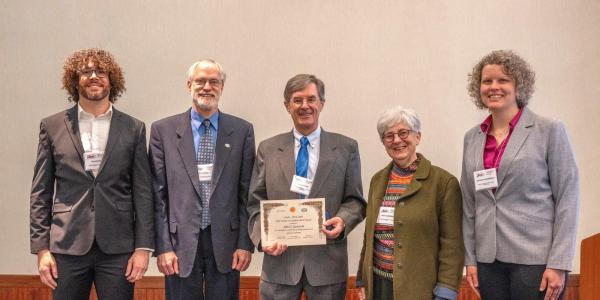Assistant Professor Taylor Barton has been awarded a CAREER award from the National Science Foundation for her work on enabling the next generation of wireless communication systems.
These prestigious awards support early career faculty who have the potential to become leaders in research and education in their fields. Barton, who earned her PhD from the Massachusetts Institute of Technology, has been a faculty member at CU Boulder since 2016.
Barton said that her project, "Analog-Assisted Transceivers for Next-Generation Millimeter-Wave Systems," is aimed at exploring new signal-processing techniques that could be used in 5G cellular networks, autonomous vehicles and more.
With the growing need for increased radio spectral access, many wireless systems are moving to millimeter-wave (30-100 GHz) carrier frequencies. In addition to reducing physical size and weight, this frequency scaling is beneficial because it enables higher-bandwidth signals which, in turn, produce higher data rates. Such high-performance wireless systems are needed in many applications, including 5G communications, internet of things, autonomous vehicles, national security and healthcare applications.
Today's wireless systems rely on digital signal processing to generate and operate on signals. As the signal bandwidth is increased, so is the clock rate required for digital signal processing. This in turn leads to higher power consumption and performance degradation. Successfully expanding to wideband millimeter-wave systems therefore requires novel radio architectures with alternative solutions for broadband signal processing. To address this issue, the project investigates both linear and nonlinear analog techniques to substantially improve the signal processing of next-generation wireless systems. Fundamental principles of scaling indicate that analog techniques become increasingly attractive in millimeter-wave systems due to the relatively low fractional bandwidths at high carrier frequencies even when instantaneous bandwidths increase dramatically.
Through this research, the performance of linear and efficient wideband millimeter-wave systems will be substantially improved, enabling new and innovative uses of the electromagnetic spectrum.



